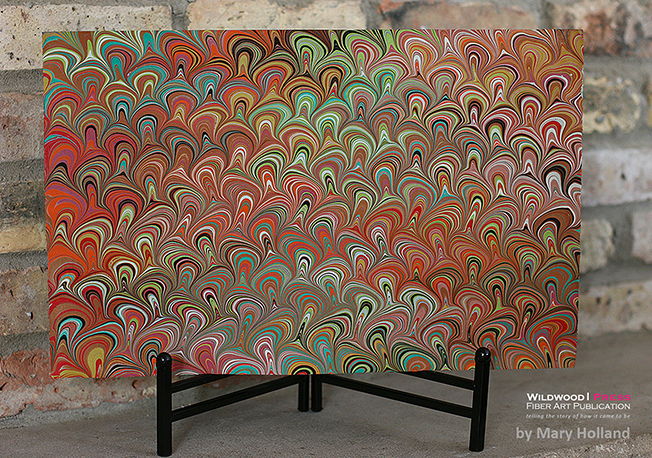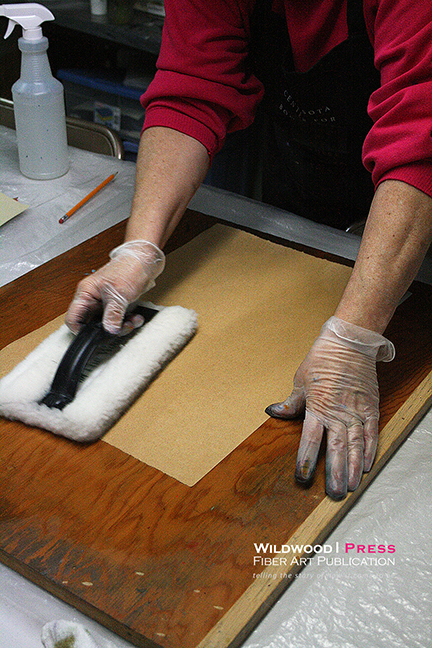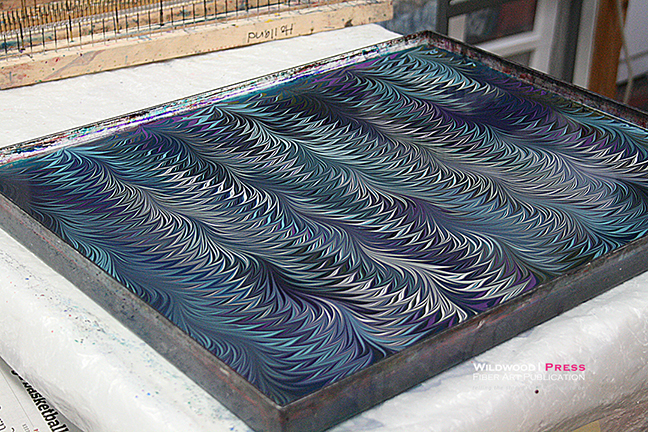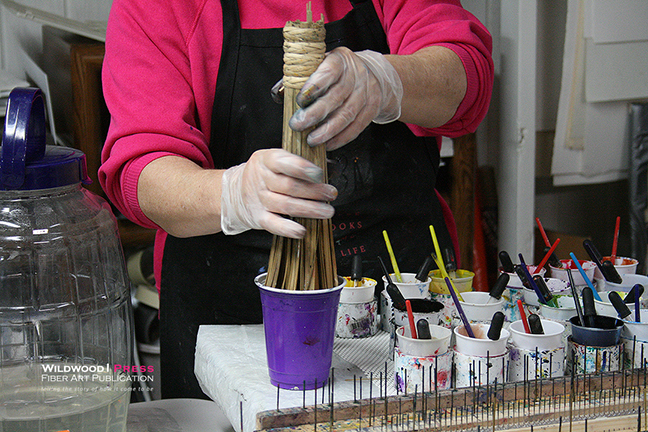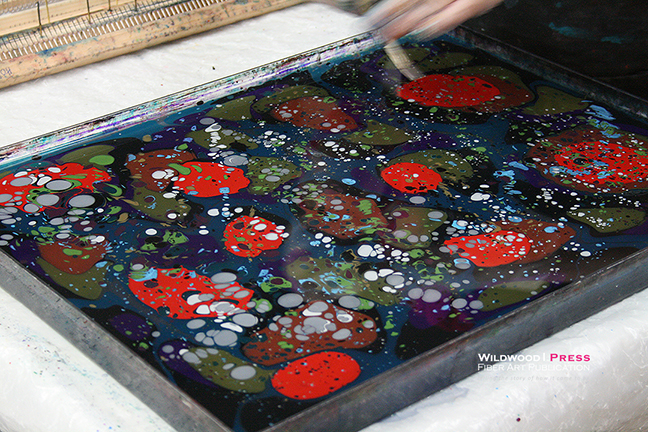Mary Holland, who has been marbling paper for almost twenty years, showed me the basics as she worked in her shared studio space in the basement of a friend’s house in St Paul. A retired teacher, Mary was especially adept at explaining the process to a greenhorn such as me. This post contains many process images so the reader may see as much detail about the process as possible. To begin, I’ll say this: it takes a steady hand!
Paper marbling (hydro printing) is a method of aqueous surface design in which patterns are transferred from paint floating on water to paper (or fabric). The result is a mirror image printed onto the new surface. Each is a monoprint because the combination of paint colors and shapes made in the water tank are one of a kind and can’t be reproduced to make more than one print at a time. The very movement of the paint transfer during the printing process makes it impossible.
Before any of the printing magic can happen, materials preparation takes place several days in advance. This task prepares the water tank with a combination of carrageenan (seaweed powder) and water. The seaweed forms a slightly viscous surface tension and is what allows the paint to float on the water instead of being absorbed into the water.
On the day of hydro printing, the paper is prepared with a mordant (aluminum sulfate) brushed into the fibers of the paper. The paper is then inserted into a pressboard which keeps it flat and damp while the paint and design are created in the water tank. Paint is added with eye droppers to create circles or other tools are used for different effects. For example, a split bamboo ‘brush’ technique was used to flick paint over the tank when she made the piece on the title page of this book. Mary says there are 120 traditional designs that can be used as examples.
Once the paint is applied, Mary then used tools to manipulate the design. In the photos above, she uses a comb to create warped lines in the paint. Combs come in varying gauges and can be gently pulled through the paint in any direction. Or, the paint can be left undisturbed such as the Spanish moiré design on the title page, letting the slight movement of the paper create the visual folds.
The paper is placed in the tank with the mordant side down and within a seconds be lifted by a corner from the tank. The paper is put into a water bath removing the mordant and hung up to dry! After the sheet is dry, a warm iron smoothes the surface. Viola!
Mary is a part of Minnesota Center for Book Arts which is a very vibrant community filled with opportunities to learn a book art or mastering book art techniques. Many workshops, classes and round table discussions are available. For more info click on this link.

